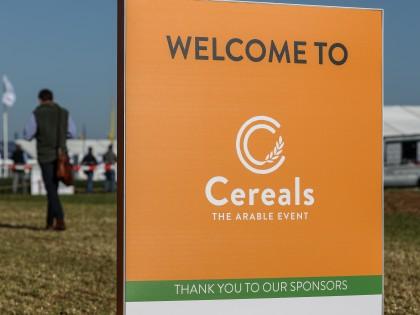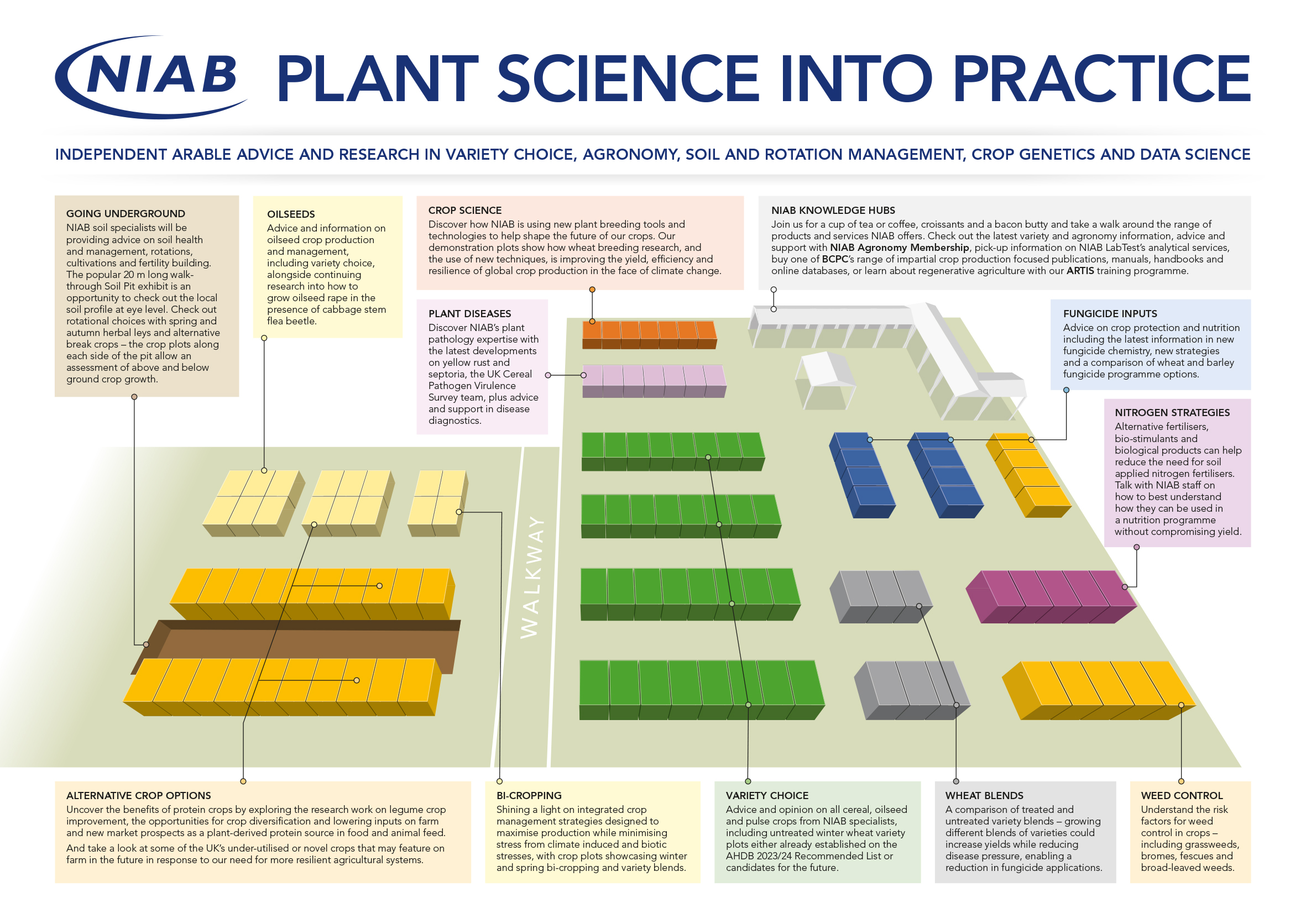- About
-
Research
- Agronomy and farming systems
-
Agricultural crop research
-
Research projects - agriculture
- About SASSA-SAI
- BioBoost
- Biomass Connect
- CTP for Sustainable Agricultural Innovation
- Climate Ready Beans - workshop presentations (March 2022)
- Crop diversity HPC cluster
- Designing Future Wheat
- Final project workshop
- Get involved
- List of materials
- News and updates
- Partners
- Rustwatch
- The Sentinel Crop Disease Surveillance Network
- The research team
- UK Cereal Pathogen Virulence Survey
- UK wheat varieties pedigree
- Weed management - IWM Praise
- Crop breeding
- Crop characterisation
- Data sciences
- Genetics and pre-breeding
- Plant biotechnology
- Plant pathology and entomology
- Resources
-
Research projects - agriculture
-
Horticultural crop research
-
Research projects - horticulture
- Augmented Berry Vision
- BEESPOKE
- Boosting brassica nutrition in smart growing systems
- CTP for Fruit Crop Research
- Develop user-friendly nutrient demand models
- Egg laying deterrents for spotted wing drosophila
- Enhancing the nutritional quality of tomatoes
- Improving berry harvest forecasts and productivity
- Improving vineyard soil health through groundcover management
- Intelligent growing systems
- Knowledge transfer for sustainable water use
- POME: Precision Orchard Management for Environment
- RASCAL
- STOP-SPOT
- UV-Robot
- Crop science and production systems
- Genetics, genomics and breeding
- Pest and pathogen ecology
- Field vegetables and salad crops
- Plum Demonstration Centre
- The WET Centre
- Viticulture and Oenology
-
Research projects - horticulture
- Crop Science Centre
-
Services
- Analytical Services
- Business Development
- Commercial trial services
- Membership
- Plant breeding
- Plant characterisation
- Seed certification
-
Training
-
Technical agronomy training
- Advanced crop management of bulb onions
- Advanced crop management of vegetable brassicas
- Advanced nutrient management for combinable crops
- Benefits of cover crops in arable systems
- Best practice agronomy for cereals and oilseed rape
- Developing a Successful Strategy for Spring Crops
- Disease Management and Control in Cereal Crops
- Incorporating SFI options into your rotation
- Protected Environment Horticulture – Best Practice
- Techniques for better pest management in combinable crops
- Crop inspector and seed certification
- Licensed seed sampling
-
Technical agronomy training
- News & Views
- Events
-
Knowledge Hub
- Alternative and break crops
-
Crop genetics
- POSTER: Diversity enriched wheat (2025)
- POSTER: Genetics of wheat flag leaf size (2024)
- POSTER: Wheat yield stability (2024)
- Poster: Traits for future cereal crops (2022)
- POSTER: wild wheat fragment lines (2022)
- POSTER: Improving phenotyping in crop research (2022)
- PRESENTATION: Plant breeding for regen ag
- Poster: Designing Future Wheat (2020)
- Crop nutrition
-
Crop protection
- POSTER: Understanding the hierarchy of black-grass control (2025)
- POSTER: Emerging weed threats (2025)
- POSTER: Disease control in barley (2025)
- Poster: Weed seed predation in regen-ag (2024)
- POSTER: Disease control in winter wheat (2025)
- POSTER: Mode of action (2023)
- POSTER: Inter-row cultivation for black-grass control (2022)
- POSTER: UKCPVS winter wheat yellow rust in spring 2025 (2025)
- Poster: Management of Italian ryegrass (2021)
- POSTER: UKCPVS winter wheat rusts - 2024/25 review (2025)
- POSTER: UKCPVS disease monitoring and the benefit to UK growers (2025)
- POSTER: Diagnosing and scoring crop disease using AI (2025)
- POSTER: Finding new sources of Septoria resistance (2024)
- POSTER: Fungicide resistance research (2024)
- POSTER: Detecting air-borne pathogens (2024)
- POSTER: Oilseed rape diseases (2024)
- POSTER: Fungicide resistance research (2024)
- POSTER: Improving chocolate spot resistance (2022)
- Poster: Pathogen diagnostics (2022)
- Fruit
- Regen-ag & sustainability
-
Seed certification
- POSTER: Wheat DUS (2024)
- POSTER: Innovation in variety testing (2024)
- POSTER: AI and molecular markers for soft fruit (2024)
- POSTER: Barley crop identification (2023)
- POSTER: Herbage grass crop identification (2023)
- POSTER: Herbage legume crop identification (2024)
- POSTER: Minor cereal crop inspecting (2023)
- POSTER: Pulse crop identification (2023)
- POSTER: Wheat crop identification (2023)
-
Soils and farming systems
- POSTER: Checking soil health - across space and time (2024)
- POSTER: Checking soil health - step by step (2024)
- POSTERS: Changing soil management practices (2022)
- Poster: Monitoring natural enemies & pollinators (2021)
- POSTER: Soil structure and organic matter (2024)
- POSTER: Novel wheat genotypes for regen-ag (2024)
- Video: New Farming Systems project (2021)
- Video: Saxmundham Experimental Site (2021)
- POSTER: Impact of prolonged rainfall on soil structure (2024)
- POSTER: Soil & agronomic monitoring study (2024)
- POSTER: The impact of rotations & cultivations (2024)
- VIDEO: Great Soils; soil sampling guidelines (2020)
- Poster: Soil invertebrates within arable rotations (2024)
- VIDEO: Soil health assessment (2021)
- POSTER: Saxmundham - modern P management learnings
- POSTER: Saxmundham - 125 years of phosphorus management
- Poster: Soil phosphorus - availability, uptake and management (2025)
- POSTER: Morley long term experiments (2025)
- POSTER: Exploiting novel wheat genotypes for regen-ag (2025)
- Video: Saxmundham Experimental Site (2021)
- Varieties
NEWS: Alternative crop display on NIAB Cereals 2023 stand

NIAB is demonstrating options for more resilient future agricultural systems at the 2023 Cereals Event in Nottinghamshire on 13th and 14th June, with 20 different crops featured on its stand.
Stuart Knight, Director of Agronomy at NIAB, explains that visitors can take a look at diverse range of the UK’s underutilised and novel crops that may become more popular over the next few years on farm, and discuss crop management options with NIAB specialists and advisors. “With five herbal grazing ley mixtures alongside buckwheat, quinoa, grain maize, durum wheat, hybrid rye and triticale growers have the option to view the crops above and below ground in the 20 metre long NIAB Soil Hole,” says Mr Knight.
“From peas and beans to lentils and lupins, chickpeas and soya, visitors can also uncover the benefits of protein crops. NIAB’s research work on legume crop improvement will be central to the feature as growers can explore the opportunities for crop diversification and lowering inputs on farm and new market prospects as a plant-derived protein source in food and animal feed.”
Varieties
The NIAB stand (no 405), and its neighbouring Soil Hole exhibit (no 406), continues to be the Event’s one-stop shop for the latest independent technical advice and research, with 110 crop and variety plots demonstrating variety choice, agronomy, soil and rotation management and crop genetics.
The traditional winter wheat variety demonstration plots remain at the heart of the NIAB stand and the destination point for all Cereals Event visitors planning next season’s cropping. This year there are 32 varieties either already established on the AHDB Recommended List or candidates, with differences in disease susceptibility between the varieties clearly evident on the untreated plots. NIAB’s variety specialists are available to talk and advise on, not only winter wheat, but variety choice options in all cereals, oilseeds and break crops.
Alongside are plots demonstrating fungicide inputs versus yield in winter wheat and winter barley, a return of the treated and untreated wheat variety blends and a new bi-cropping exhibit. “With new fungicides on the horizon for winter wheat and winter barley, the NIAB plots will compare new cereal fungicides and showcase fungicide inputs versus yield for a range of varieties. “The stand will also shine a light on integrated crop management strategies designed to maximise production while minimising stress from climate induced and biotic stresses, with crop plots showcasing winter and spring bi-cropping and variety blends,’’ says Mr Knight.
The agronomy plots also take a look at alternative nitrogen strategies in cereal crops. Several alternative fertilisers, bio-stimulants and biological products that can help reduce the need for soil applied nitrogen fertilisers are demonstrated. “NIAB is currently trialling some of the innovative products to understand how best they can be used in a nutrition programme without compromising yield. Reducing reliance on nitrogen fertiliser can help to reduce greenhouse gas and ammonia emissions. Our NIAB staff will discuss some of these products and trial plots at the Cereals Event,” finishes Mr Knight.
Summary
The NIAB stand at the Cereals Event is known for providing the latest technical advice and research in variety choice, independent agronomy, soil and rotation management, crop genetics and data science. The full list of exhibits planned for 2023 includes:
- variety demonstration plots - providing expert advice on winter wheat variety choice for 2023/24 with 32 established and new candidate varieties.
- advice on crop protection and nutrition including the latest information in new fungicide chemistry, new strategies and a comparison of wheat fungicide programme options and a demonstration of wheat variety blends;
- research and information on rotations, cultivations, tillage and soil management from NIAB specialists, including a look at alternative break crops to winter oilseed rape and a range of spring crops;
- some of the UK’s under-utilised or novel crops that may feature on farm in the future in response to our need for a more resilient agricultural system, e.g. herbal grazing ley mixtures alongside buckwheat, quinoa, grain maize, durum wheat, hybrid rye and triticale;
- uncovering the benefits of protein crops, including lupins, peas, beans, lentils, chickpeas and soya;
- understanding the risk factors for weed control in arable cropping – including bromes, fescues and broad-leaved weeds such as bur chervil and poppy;
- plant disease research and new diagnostic techniques;
- NIAB crop research; using new plant breeding tools and technologies to help shape the future of our crops. The demonstration plots show how wheat breeding research, and the use of new techniques, is improving the yield, efficiency and resilience of global crop production;
- discovering the science and skills behind NIAB’s unique and long-established plant phenotyping and seed certification services, testing over 1,000 new varieties every year;
- NIAB Agronomy Membership services including the latest crop production advice and farmer-led research, field days, agronomy trials results, unique regional variety information and weekly agronomy updates through the season.
Meet the products and services offered by NIAB in our knowledge hubs including:
- BCPC’s range of impartial crop production focused publications, manuals, handbooks and online databases;
- NIAB LabTest’s analytical services;
- our extensive and successful independent field and glasshouse trialling services.






